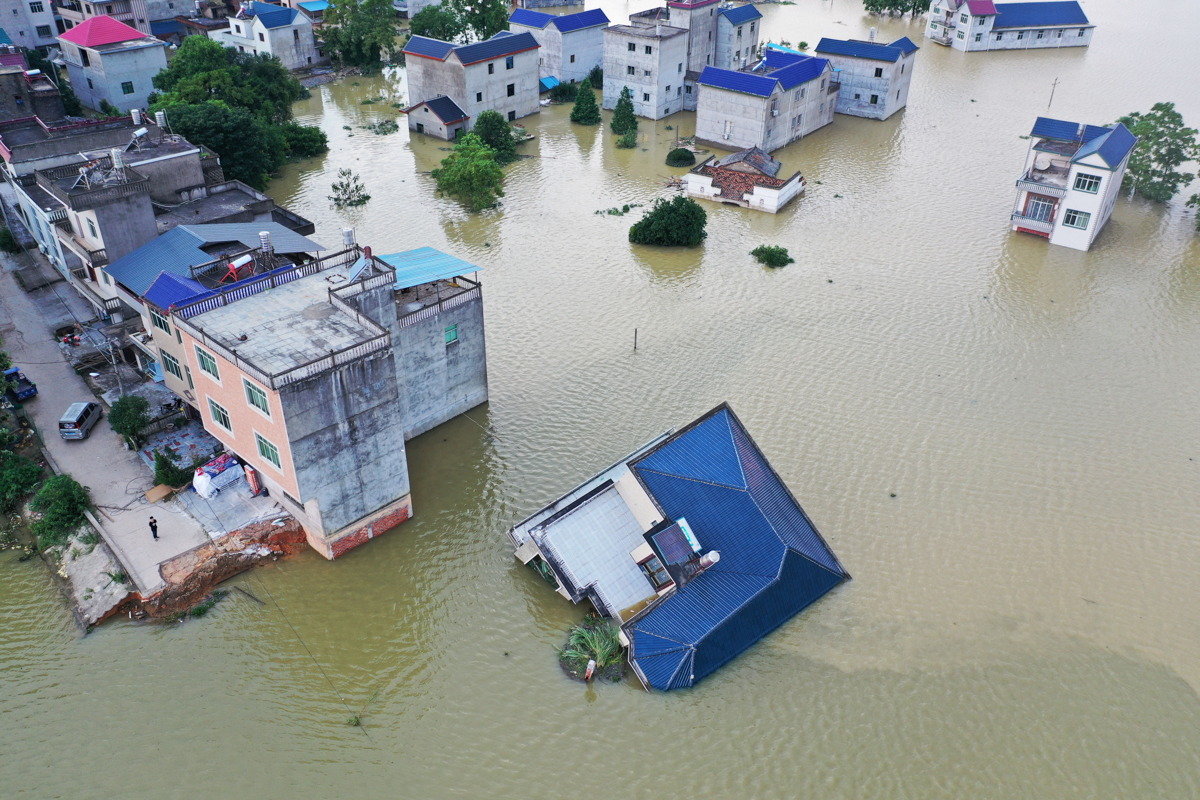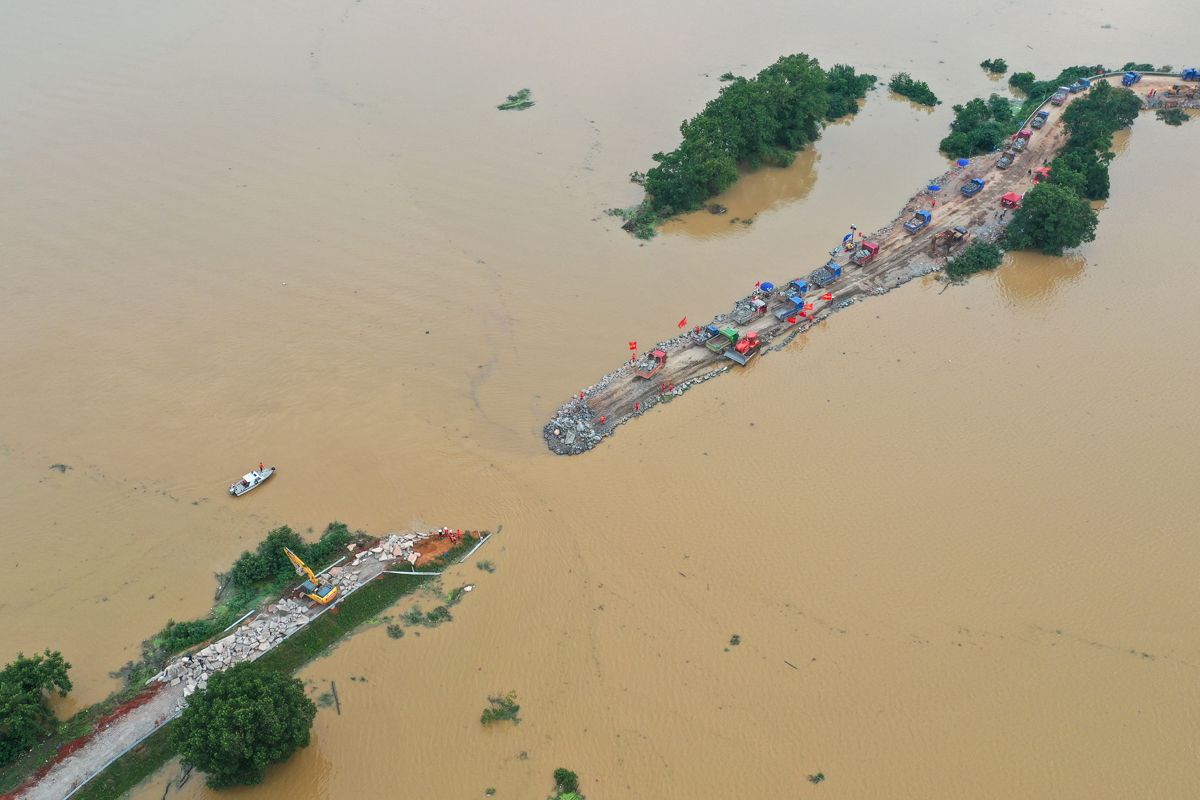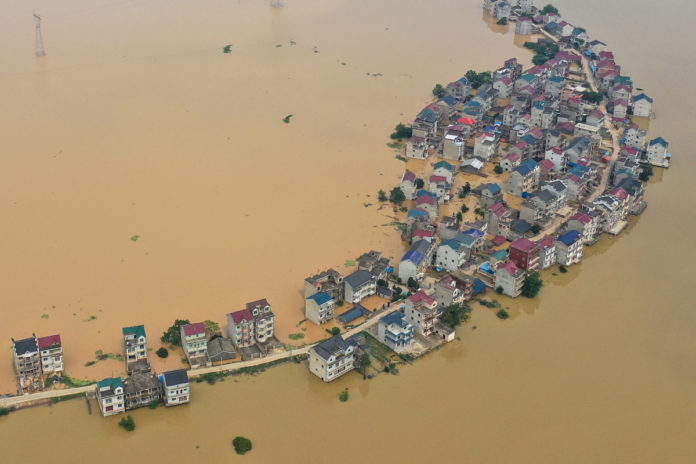Severe floods affecting wide swaths of China since June 2020 have left at least 141 people dead or missing and almost 38 million affected in 27 provinces, officials reported on Monday, July 13, 2020. Up to 433 rivers have risen to dangerous levels, with 33 of them crossing historical highs. This is one of the worst rainfall seasons on record, resulting in direct economic losses of more than 61 billion yuan ($8.7 billion USD).
Average precipitation in the Yangtze River over the past month and a half has reached the highest level since 1961 and water in 433 rivers has risen above flood alert levels, with 33 above historical highs.
It is the worst floods in China in more than 30 years, as regions across the country brace for another “grim” week of torrential rain.
The coronavirus ground zero of Wuhan, through which the powerful Yangtze River winds, is on an expanding list of areas warily watching the rising waters.
The river hit its third-highest levels and is projected to increase through the week, according to state-controlled media.
As many as 33 rivers have reached record highs, while alerts have been issued on a total of 433 rivers, officials from the Chinese water resources ministry said.
The worst-hit provinces were Jiangxi, Hubei and Hunan in central China, Anhui, Zhejiang and Jiangsu in the country’s east, and the southwestern mega-city of Chongqing, authorities said.
Amid growing alarm, President Xi Jinping on Sunday called on authorities in affected areas to mobilise to help stricken residents, urging them to be “courageous”.
China’s worst floods in recent decades came in 1998 during an El Nino weather effect, killing more than 4,000 people, mostly around the Yangtze.
 Various parts of China have been hit by continuous downpours since June, the damage adding pressure to a domestic economy already hit by the coronavirus pandemic.
Various parts of China have been hit by continuous downpours since June, the damage adding pressure to a domestic economy already hit by the coronavirus pandemic.
 A building that has fallen over after flooding is partially submerged in floodwaters. Almost 38 million people have been affected and 28,000 homes destroyed, according to central government tallies.
A building that has fallen over after flooding is partially submerged in floodwaters. Almost 38 million people have been affected and 28,000 homes destroyed, according to central government tallies.



















































